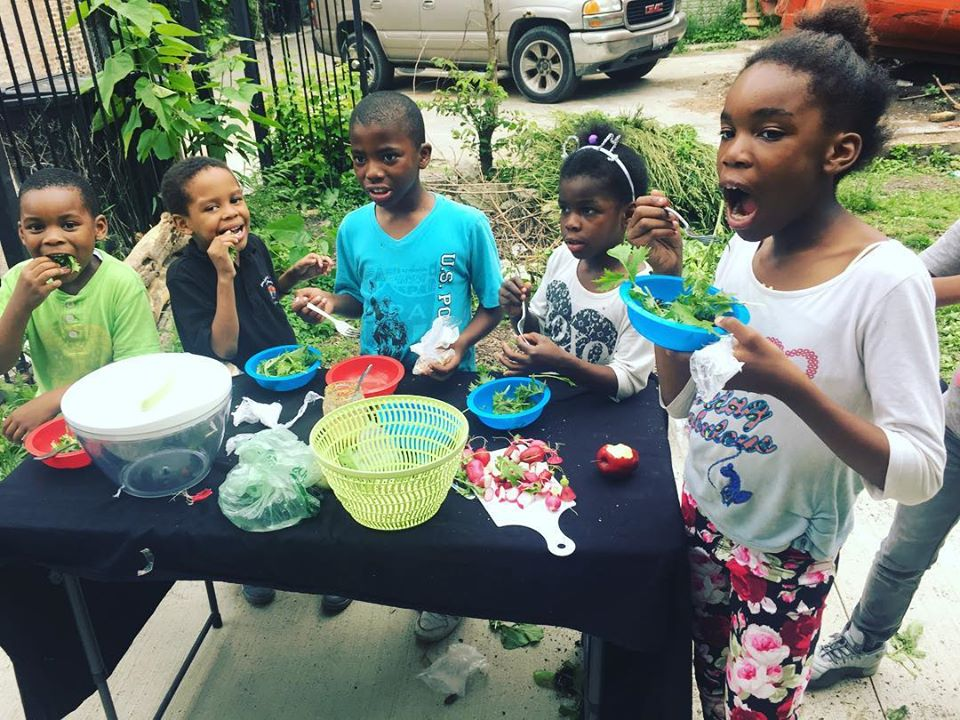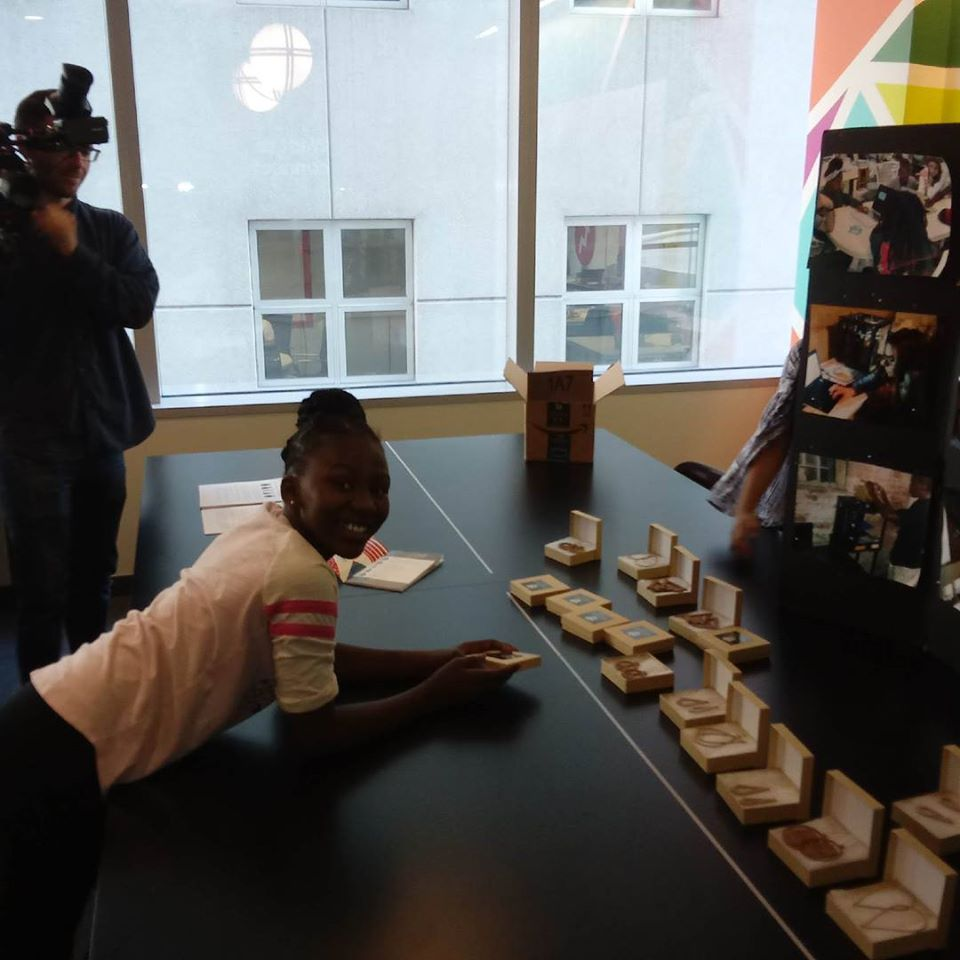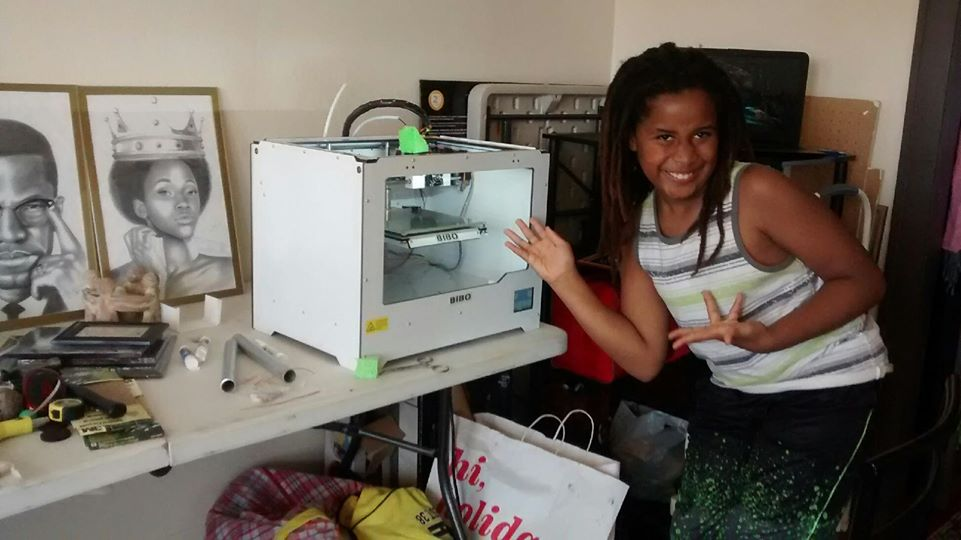By. Quilen Blackwell
More and more students are expressing interest in entrepreneurship, especially in environmental fields. As an educator, you know that incorporating more entrepreneurial activities in your classroom would be a great way to tap into your students’ interest. But how can you fit in another project on top of all your other responsibilities? Fear not! I have some quick and easy DIY projects that can wet your students’ entrepreneurial appetite without breaking the bank or taking up too much time!
The DIY projects that I share with you below come from my experience leading the Chicago Eco House and Southside Blooms, where we use agriculture and technology to introduce youth to environmental entrepreneurship. We have done everything from 3D printing, installing solar-powered rainwater catchment irrigation systems, raising backyard chickens and rabbits, growing flowers and vegetables, taking care of bees on-site, and much more! Environmental entrepreneurship is simply advancing the same environmental sustainability goals that we all have but coming at it from the perspective of a business person. In terms of the triple bottom line (environmental, social, and economic sustainability), this is simply helping students to navigate the following question: How can we meet the material needs of people while also being great environmental stewards?
Without further ado, let’s jump into five quick and easy DIY projects that can help your students navigate this question.

Potato Chip Heaven
Budget: under $100
Potatoes are a staple food crop that’s enjoyed by many cultures and they are very inexpensive to grow. This project simply entails purchasing organic potatoes (must be organic or else it won’t work) and planting them in a raised bed or in healthy ground soil (you can always test your soil quality if you aren’t sure). Students plant the potatoes in the spring and harvest them in the fall. They can then turn their home-grown potatoes into delicious potato chips and sell them to other students, their families, and school staff.
3D Printed Jewelry
Budget: under $500
This project is for the more tech savvy; however, with the cost of 3D printers dropping and the quality of prints improving, this could be a great way to introduce students to hyperlocal manufacturing concepts. To get started, you will need a 3D printer (I recommend the Monoprice Maker Select Plus for newbies) and PLA filament (this can be ordered on Amazon – I recommend a wood-based filament since you will treat it the same way you would any wood-based product in post-production by using wood stain, sanding, etc.). You will also need to download a free slicing software such as Cura. Begin by having your students download free jewelry designs off of Thingiverse. From there, they can print their designs using the wood-based filament and use a wood stain to jazz them up a bit. We have sold 3D printed earrings for as much as $20 a pair at local boutiques! If your students really get into this project, you can have them design their own earrings using TinkerCAD.

Eggs, Eggs, and more Eggs
Budget: under $500
Raising chickens is a great way to introduce students to animal husbandry while teaching them where their food comes from and the importance of treating animals with respect. Chickens are very low maintenance, and if you or any of your students’ parents have decent handyman skills, you can save a lot of money by building your own coop and run. In addition to the hands-on educational opportunities that raising chickens offers, you and your students can sell their eggs to help fund the operation. We have sold our eggs for $6 a dozen; however, the best way to price your eggs is to go to the local grocery store and see how much they charge for organic eggs. To save on feed costs, give your chickens food scraps from the cafeteria and use this as an opportunity to teach your students about repurposing food waste. The other cool thing about chickens is that you can add on other small projects once your foundation is in place. Some ideas include a rainwater purification system, solar-powered doors that open and close at set times, and outdoor cameras to monitor the chickens from a smartphone.
Mint (or any herb) Tea
Budget: Under $50
Who doesn’t like a warm cup of tea on a cool day or when you’re feeling under the weather? Why purchase store-bought tea when you can work with your students to make your own! Mint is easy to maintain, spreads very quickly, and can be grown in a raised bed or in the ground if your soil quality is good enough. Mint is a perennial, so once it’s planted, you should have plenty of mint available for years to come. Once the mint is ready for harvest, students can dry it out and prepare it to be sold as tea packets or as fresh, hot cups of tea in the morning or at lunch.

Homegrown Lemonade
Budget: Under $200
When you think about kids and entrepreneurship, the classic lemonade stand probably comes to mind. You can bring back this oldie but goodie by growing lemon trees in your classroom. You can use this as a way to introduce students to indoor growing concepts while educating them on the thousands of miles that citrus travels to get to their refrigerators. Of course, the delicious by-product of freshly squeezed lemonade to sell is an added bonus! For something a little different, you can teach your students about 18th century America while they turn lemon peels into candy to sell.
Environmental entrepreneurship can be overwhelming at first, but hopefully these DIY projects will help simplify the education process for you. The beauty of these projects is that they can be scaled up or down based on your capacity – there’s no right or wrong way to approach them. Also, each of these projects leaves plenty of room for student input, so encourage their creative ideas. Finally, remember that the most important part of teaching entrepreneurship is the process and not the product. Many great entrepreneurs failed several times before landing on their secret sauce to success. Reframe the inevitable bumps in the road as learnings to help develop your students’ mindsets toward entrepreneurship.
Author Bio
Quilen Blackwell is president and co-founder of Chicago Eco House, whose mission is to train inner-city youth in sustainable social enterprises to alleviate poverty. Quilen holds a bachelor’s degree in history from the University of Wisconsin-Madison and a master’s degree in environmental policy and sustainability from the University of Denver. He is an experienced community organizer who worked to help expand affordable housing in suburban Milwaukee and was in international development through his service in the United States Peace Corps in Thailand. Afterward, he transitioned to the biofuels industry where he worked to procure biodiesel feedstock for a biodiesel refinery. Quilen is a married father of three young children and resides in the Englewood neighborhood on the south side of Chicago.

